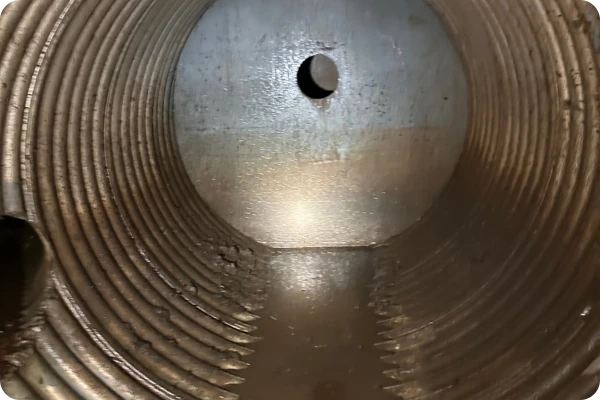As urban areas expand and land becomes more developed, managing stormwater runoff has become a critical part of sustainable infrastructure planning. Dense development increases impervious surfaces like asphalt and concrete, which prevent natural infiltration of rainwater. To manage this excess runoff and reduce the risk of flooding, property owners and municipalities are turning to underground stormwater detention facilities – particularly detention vaults – as practical, space-saving solutions.
These underground systems offer a highly efficient and adaptable way to manage runoff in densely developed areas. In this post, we’ll explore the benefits of stormwater detention facilities, particularly in urban settings where space, compliance, and sustainability are key concerns.

What Is a Stormwater Detention Facility?
A stormwater detention facility is a system designed to temporarily store stormwater runoff and release it slowly into the storm drain system or a natural waterway. These systems help control flooding, reduce peak flow rates, and support regulatory compliance. Detention facilities come in a variety of forms, from surface-level detention basins to underground detention vaults.
Why Urban Areas Need Detention Facilities
Cities are especially vulnerable to flooding because of their high ratio of impervious surfaces. Without proper stormwater management, urban runoff can overwhelm drainage systems, cause property damage, and pollute local waterways.
Installing a stormwater detention facility, like a stormwater detention vault, allows developers and property managers to meet stormwater requirements without sacrificing valuable land.
Benefits of Detention Vaults in Urban Environments
1. Space-Efficient Stormwater Management
In urban areas, every square foot of land is valuable. Traditional detention basins or ponds require large surface footprints – something most city sites can’t accommodate. Detention vaults are installed underground, maximizing land usability for parking lots, buildings, roads, or green space.
Ideal for:
- Parking lots
- Commercial developments
- High-density residential complexes
- Transportation corridors
2. Flood Mitigation and Infrastructure Protection
Detention vaults control peak flow rates by temporarily holding excess runoff and releasing it at a controlled rate. This helps prevent downstream flooding and reduces the strain on municipal stormwater systems – especially during high-intensity storm events.
Bonus: This also helps extend the lifespan of surrounding infrastructure like pipes, culverts, and streets.
3. Regulatory Compliance and Permitting
Many jurisdictions now require post-construction stormwater controls for new developments and redevelopments. Stormwater detention vaults can be engineered to meet local and state compliance requirements, including peak discharge limits, volume reduction goals, and water quality treatment when paired with filtration systems.
Supports compliance with:
- MS4 permit programs
- EPA Clean Water Act mandates
- Local stormwater ordinances
4. Customizable Design and Modular Flexibility
Detention vaults come in a variety of materials – precast concrete, corrugated metal pipe (CMP), high-density polyethylene (HDPE) – and can be custom-designed to fit site-specific needs. Engineers can configure vaults in irregular shapes or stack them vertically to suit tight footprints or complex underground conditions.
Flexible for:
- Retrofit projects
- Mixed-use developments
- Challenging topographies
5. Enhanced Aesthetics and Property Value
Because these systems are installed underground, detention vaults allow for a cleaner, more appealing surface environment. Developers can maintain visual aesthetics while meeting stormwater requirements, preserving open space for community use or development.
No more:
- Fenced-off ponds
- Unused low-lying areas
- Eyesores that detract from curb appeal
Optional Add-Ons: Water Quality Treatment
Stormwater detention facilities can be outfitted with integrated pretreatment devices, such as hydrodynamic separators, sediment forebays, or media filters. This allows them to capture pollutants like oil, trash, sediment, and nutrients, helping meet water quality goals in addition to volume control.
Maintenance Matters
All stormwater detention facilities require regular maintenance to perform effectively. Vaults should be inspected for debris, sediment buildup, and mechanical failures. Property managers should partner with a stormwater professional to establish a long-term inspection and maintenance plan.
Final Thoughts
Stormwater detention facilities are a smart, scalable solution for managing runoff in urban environments. Their underground design, engineering flexibility, and ability to meet both regulatory and aesthetic goals make them an increasingly popular choice for developers, municipalities, and commercial property managers.
As urbanization continues, investing in modern, space-saving stormwater infrastructure is essential for building resilient, compliant, and livable communities.
Need Help With a Stormwater Detention Facility?
Our team at iSTORMWATER specializes in custom stormwater management solutions for urban developments. From design and installation to maintenance and inspections, we help ensure your site stays compliant and flood-resilient.
👉 Contact us today at (410) 231-3455 or schedule a consultation online.
Real Results
iStormwater LLC was an excellent choice. They made the process of the Stormwater pond repairs seamless. They took charge of the project and got the project approved and passing the inspection. We highly recommend them and would use them again.
Incredible stormwater management service. The owner John consulted on a property I manage and ended up saving us thousands of dollars in environmental fees from the government. Now, our property is compliant with the EPA and we have a great partner to keep us maintained on stormwater regulations over time.
So helpful with all of my water issues.
Great communication and leadership and a family friendly atmosphere. Thank you John!
Stormwater facilities are designed to work quietly in the background - managing runoff, preventing flooding, and protecting downstream waterways. But even the best-designed systems can...
- Annapolis
- Anne Arundel County
- Baltimore County
- Baltimore
- Bel Air South
- Bethesda
- Bowie
- Cecil County
- Charles County
- Columbia
- Gaithersburg
- Glen Burnie
- Howard County
- Montgomery County
- Pasadena
- Prince George’s County
- Rockville
- Severna Park
- St. Mary’s County



